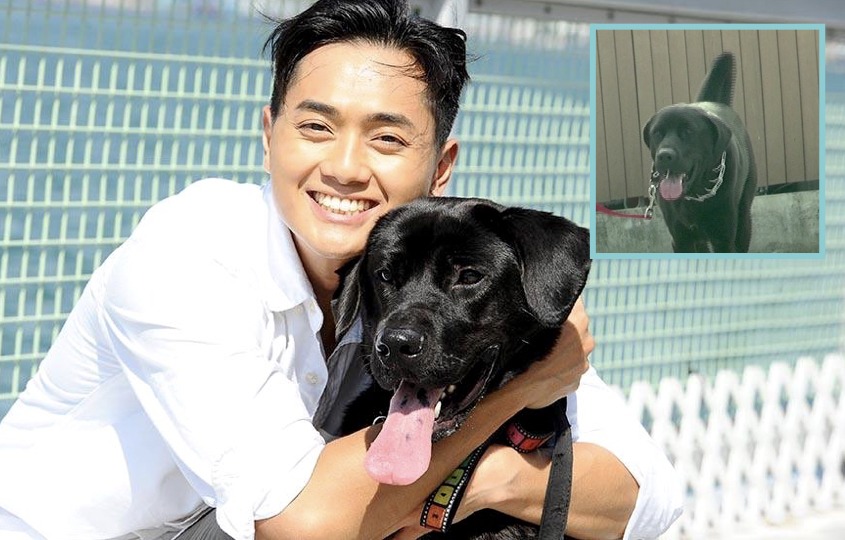Recently, a local singer and actor, Fred Cheng, was photographed using a prong collar on his adopted dog, Riley, during his walk, and hence this incident stirred wide attention and outrage.
Self-proclaimed dog lovers don’t necessarily know how to teach dogs, it takes not only care, but also knowledge with the helpful of trusted and impartial information, as well as judgement. Hellodog doesn’t intend to discuss whether the use of a prong collar is inhumane or not, we focus on talking about tools and tips for dog parents living with a dog who has leash-pulling habits so you can learn one thing or two.
As a dog parent myself, I would first ask when leash pulling becomes a problem. From our point of view, it’s when the dog pulls to the point that your arms hurt, that the dog drags you forward against your will which puts you in danger of tripping, or scare other dogs and pedestrians a great deal when the dog charges and you are incapable of controlling the situation. It is not a problem when the dog walks relaxingly in front of you.
Dog owners need to know what stimulus trigger the leash-pulling behaviour and work together with the dog to minimize that behaviour. Here we gathered some of the tools used in training (not all tools are included here and can be described in detail) and talked to a certified dog trainer for tips and tricks for your reference.
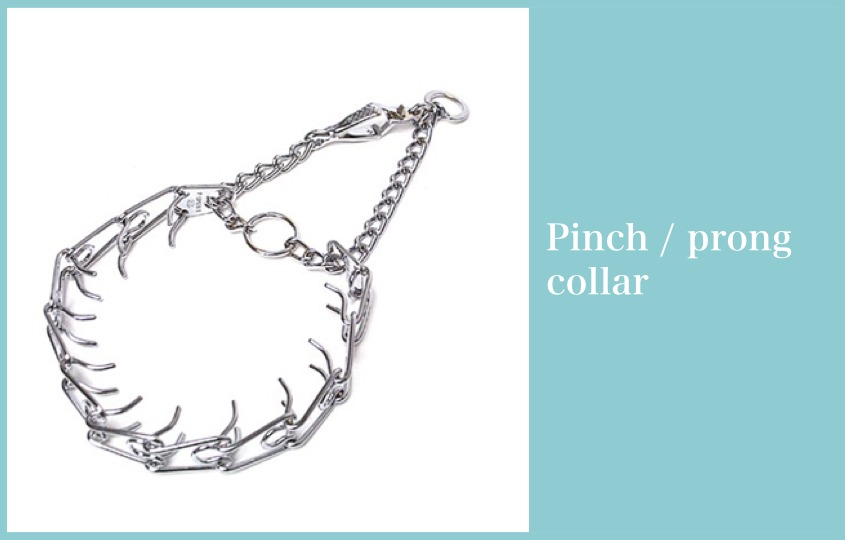 How it works? This type of collar is designed to mimic the sensation of a mother’s bite. It is positive punishment-based tool which claims to induce discomfort without any physical harm due to equal distribution of pressure points around the collar against a dog’s neck. However, the risk of mis-using this kind of collar is very high – when the dog handler uses too much force, when the collar is fixed on the wrong position or over time the collar slips out of the position, having the collar too loose, all of which potentially inflict pain and irreversible harm to the dog involved.
How it works? This type of collar is designed to mimic the sensation of a mother’s bite. It is positive punishment-based tool which claims to induce discomfort without any physical harm due to equal distribution of pressure points around the collar against a dog’s neck. However, the risk of mis-using this kind of collar is very high – when the dog handler uses too much force, when the collar is fixed on the wrong position or over time the collar slips out of the position, having the collar too loose, all of which potentially inflict pain and irreversible harm to the dog involved.
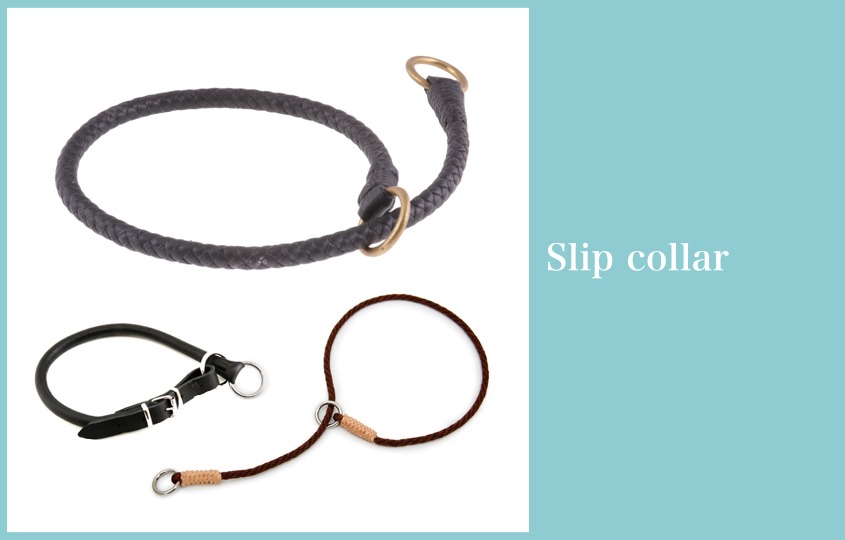 How it works? This type of collar works in a very similar mechanism like prong collars but with relatively less risks of potential damage. It tightens and loosens a noose around a dog’s neck. A unintentional harsh jerk with a slip collar can risk damaging a dog’s trachea.
How it works? This type of collar works in a very similar mechanism like prong collars but with relatively less risks of potential damage. It tightens and loosens a noose around a dog’s neck. A unintentional harsh jerk with a slip collar can risk damaging a dog’s trachea.
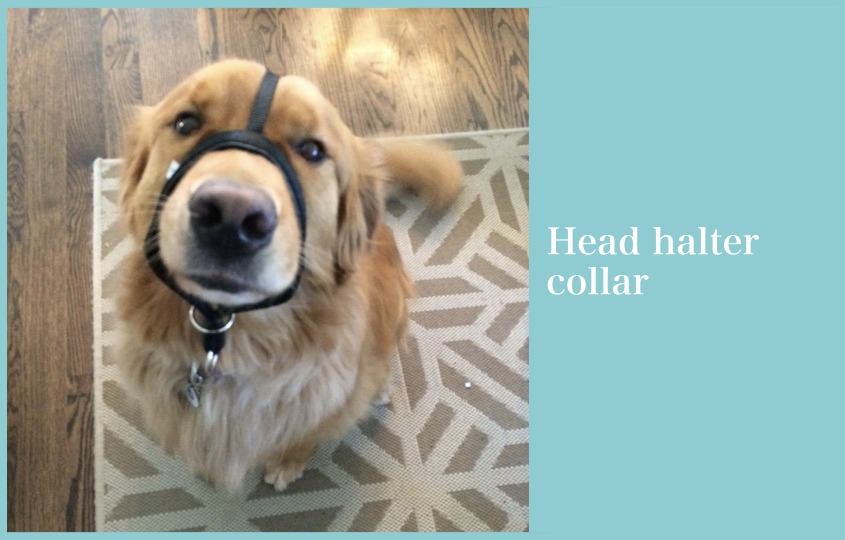 How it works? It is designed to fit over a dog’s nose and neck which aims to give more control than a typical collar or harness. The premise of this halter design is: where the head goes, the body follows. A head halter gives directional control, and by pulling gently upward, it helps close the dog’s mouth to control nipping and mouthing. Few words of caution: 1) Not every dog fits for a head halter, for example, short nosed dogs, and working with a certified professional dog trainer is a must to avoid potential mis-use. 2) You must allow the dog some time to slowly get used to wearing the collar before ever using it in a real walk for training.
How it works? It is designed to fit over a dog’s nose and neck which aims to give more control than a typical collar or harness. The premise of this halter design is: where the head goes, the body follows. A head halter gives directional control, and by pulling gently upward, it helps close the dog’s mouth to control nipping and mouthing. Few words of caution: 1) Not every dog fits for a head halter, for example, short nosed dogs, and working with a certified professional dog trainer is a must to avoid potential mis-use. 2) You must allow the dog some time to slowly get used to wearing the collar before ever using it in a real walk for training.
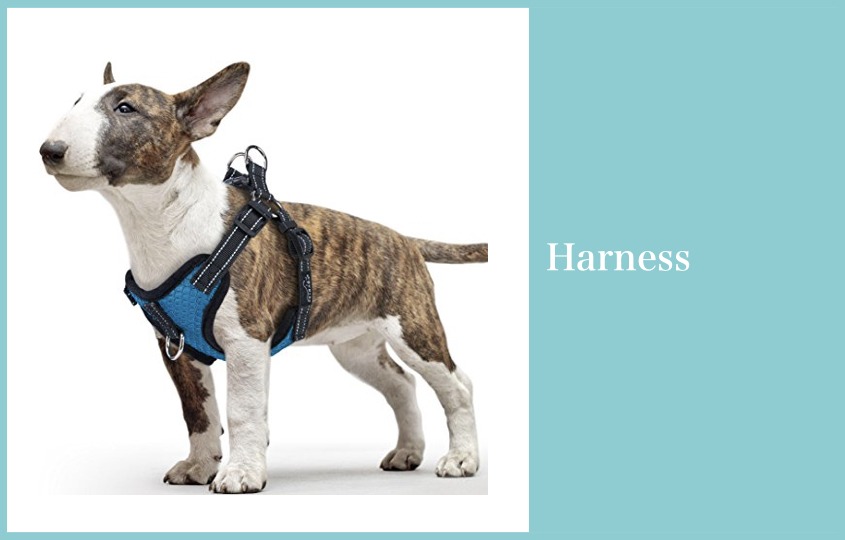 How it works? There are various types of harnesses and the most popular types are H-type and front-clipped. All harnesses are designed to distribute pulling force of a dog or from a dog handler over different parts of body and hence the potential damage with pulling or accidental pulling from the handler is greatly reduced. Dogs instinctively run to anything they love (e.g. run to welcome us when we get home, go away to explore new environment and dogs) and it’s us, human beings, want them to slow down. Some misunderstanding that wearing harness makes dogs pull more because of their pulling instinct. However it is not so true. The fact is that it is not the tool (harness) which makes dogs pull the leash but the stimulus. Few words of caution: 1) All harnesses must be correctly fitted to reduce the risk of escaping. 2) Don’t pull the leash when the dog is frightened and wants to move back, because it only increases the risk of escaping no matter what gears you are using.
How it works? There are various types of harnesses and the most popular types are H-type and front-clipped. All harnesses are designed to distribute pulling force of a dog or from a dog handler over different parts of body and hence the potential damage with pulling or accidental pulling from the handler is greatly reduced. Dogs instinctively run to anything they love (e.g. run to welcome us when we get home, go away to explore new environment and dogs) and it’s us, human beings, want them to slow down. Some misunderstanding that wearing harness makes dogs pull more because of their pulling instinct. However it is not so true. The fact is that it is not the tool (harness) which makes dogs pull the leash but the stimulus. Few words of caution: 1) All harnesses must be correctly fitted to reduce the risk of escaping. 2) Don’t pull the leash when the dog is frightened and wants to move back, because it only increases the risk of escaping no matter what gears you are using.
———————————————————————————————–
We’ve talked to a certified dog trainer and an advocate of positive reinforcement training, Siu Ming, who shared some tips and tricks when training with a severely leash-pulling dog.
1. Find out the underlying reason and stimuli to pull
Dogs basically have two types of reasons to pull — access to favourable things or retreat from unfavourable things as soon as possible. Observe and check why they are pulling and the stimuli involved because they entail very different solutions.
2. Use longer leash
You are walking your dog not only to fulfil his or her physical needs, but also mental needs. Using a longer leash provides a lot more room for the dog to explore or move back from scary things. Of course you must watch out for potential hazards on your walk.
3. Motivate your dog to love walking around you
Practice with your dog in a place with no distractions and gradually increase challenges by adding distractions and stimuli. Don’t throw your dog in at the deep end and unrealistically expect him to walk well.
4. Reward for good behaviour
Reward your dog for good behaviours (like looking back at you, walking nicely side by side with you and etc) with treats or praise or some running immediately (a dog who pulls usually loves running and letting him do so is a reward).
5. Learn to set the pace of walking
Stop walking when your dog pulls (negative punishment), resume walking and move forward when your dog doesn’t pull, hence the leash is loose (positive reinforcement).
6. Dedicate time and patience
Dogs needs time to learn no matter which tool and method you choose to use.
We urge dog parents to evaluate the pros, cons and potential risks of all tools and training methods before action, and hope this helps you make informed decisions.
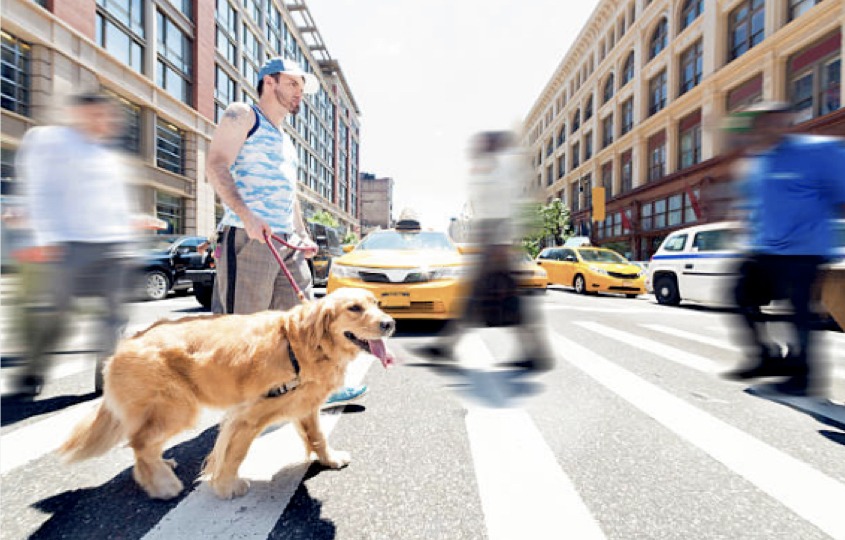
Photo credit for the main image: Next Media and Ming Pao News
